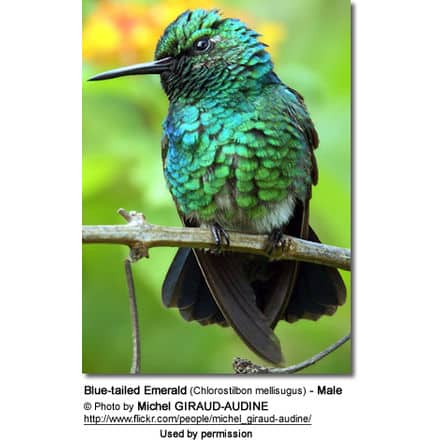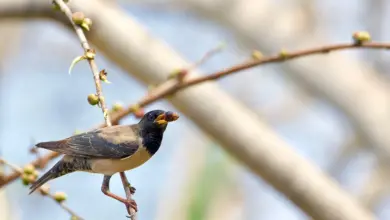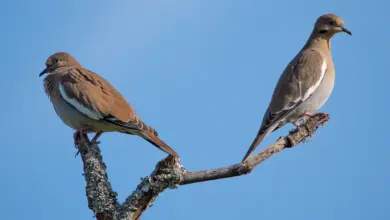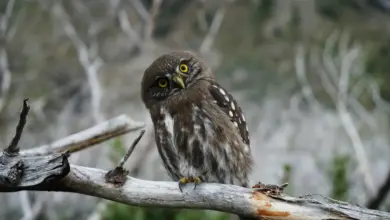Blue-tailed Emerald Hummingbird
The Blue-tailed Emerald (Chlorostilbon mellisugus) is a South American hummingbird that occurs naturally in Colombia south and east of the Guianas, Trinidad Bolivia, and Brazil. They inhabit savanna, scrub, cultivation, and similar semi-open woodland.
Other Global Names
Spanish: Esmeralda Coliazul or Esmeralda de Cola Azul; Portuguese:
Esmeralda-de-cauda-azul; Italian:
Smeraldo codablu; French: Émeraude orvert; German: Blauschwanz-Smaragdkolibri or Smaragdkolibri; Czech: kolib?ík modroocasý;
Danish: Blåhalet Smaragd; Finnish:mesismaragdikolibri; Dutch:
Blauwstaart-smaragdkolibrie;Norwegian:
Blåhalesmaragd; Polish: zlocik szmaragdowy;Slovak: smaragdovec medosavý; Swedish: Blåstjärtad smaragd; Japanese:
aiohimeemerarudohachidori
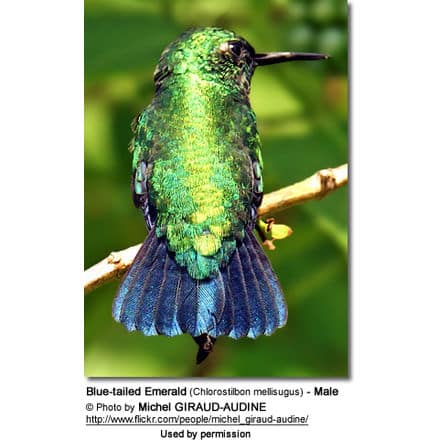
Description
The Blue-tailed Emerald averages 2.9 inches or 7.4 cm in length and weighs around 0.09 oz or 2.6 g. Its black bill is short and straight.
The male’s plumage is mostly brilliant green; except for his white thighs and forked metallic blue tail.
The female’s plumage is grey-white below. She has a blackish ear patch, a short white supercilium (line above the eye), and white-tipped outer tail feathers.
Hummingbird Resources
- Hummingbird Information
- Hummingbird Amazing Facts
- Attracting Hummingbirds to Your Garden
- Hummingbird Species
- Feeding Hummingbirds
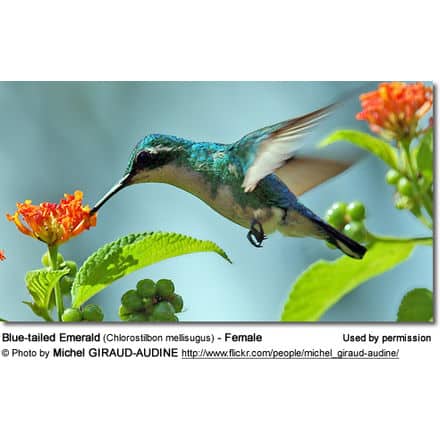
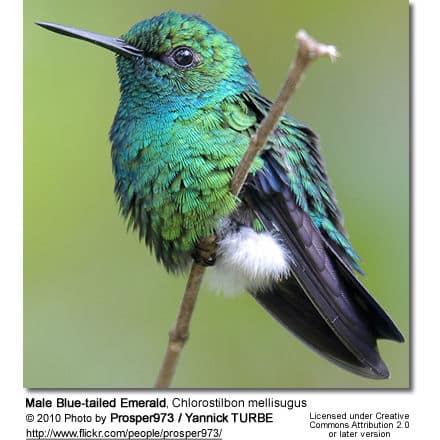
Subspecies and Ranges
- Blue-tailed Emerald Hummingbird – Chlorostilbon mellisugus mellisugus (Linnaeus, 1758) – Range: Surinam, French Guiana, lower Amazon Valley of Brazil
- Golden-crowned Emerald – Chlorostilbon mellisugus auriceps (Gould, 1852) – Range: Western and Central Mexico (south Sinaloa and southwestern Durango to Guerrero and Oaxaca).
- Cozumel Emerald – Chlorostilbon mellisugus forficatus (Ridgway, 1885) – Range: Islands of Holbox, Mujeres and Cozumel, off coast of Yucatán.
- Fork-tailed or Canivet’s Emerald – Chlorostilbon mellisugus canivetii (Lesson, 1832) – Range: Southeastern Mexico (southern Tamaulipas to Yucatán), Belize, northern Guatemala, and Bay Island or Honduras
- Chlorostilbon mellisugus osberti (Gould, 1860) – SE Mexico (extreme SE Chiapas) – Range: Western and central Guatemala and El Salvador to Honduras and Nicaragua.
- Salvin’s Emerald – Chlorostilbon mellisugus salvini Cabanis and Heine, 1860 – Range: Costa Rica, in highlands of the Pacific coast
- Garden/Allied Emerald – Chlorostilbon mellisugus assimilis (Lawrence, 1861) – Range: Southwestern Costa Rica (Térraba Valley and Dota Mountains) and arid Pacific coast of Panama (including Pearl islands)
- Chlorostilbon mellisugus pumilus (Gould, 1872) – Range: Arid and semi-arid tropical and subtropical zones of western Colombia and western Ecuador
- West Andean Emerald – Chlorostilbon mellisugus melanorhynchus (Gould, 1860) – Range: Upper subtropical western Colombia into the temperate zone in western and central Andes of Ecuador
- Red-billed Emerald – Chlorostilbon mellisugus gibsoni (Fraser, 1840) – Range: Upper Magdalena Valley (Central Colombia)
- Chlorostilbon mellisugus chrysogaster (Bourcier, 1843) – Range: Nortnern Colombia from Cartagena to Santa Marta
- Chlorostilbon mellisugus nitens (Lawrence, 1861) – Range: Northeastern Colombia and northwestern Venezuela (west and north of Andes of Mérida)
- Chlorostilbon mellisugus caribaeus (Lawrence, 1871) – Range: Islands of Curaçao, Aruba, Bonaire, Trinidad and Margarita, and northeastern Venezuela
- Chlorostilbon mellisugus duidae (Zimmer and Phelps, 1952) – Range: Mount Duida (southern Venezuela)
- Chlorostilbon mellisugus subfurcatus (Berlepsch, 1887) – Range: Eastern and southern Venezuela, Guyana, and the Rio Branco region of northwestern Brazil
- Chlorostilbon mellisugus phoeopygus (Tschudi, 1844) – Range: Upper Amazon and its eastern tributaries in Colombia, Ecuador, Peru and Bolivia
- Chlorostilbon mellisugus peruanus (Gould, 1861) – Range: Peru and eastern Bolivia
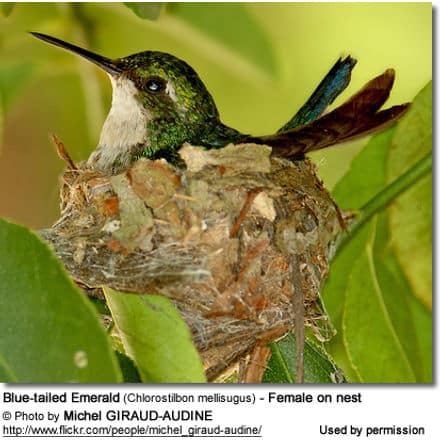
Nesting / Breeding
Hummingbirds are solitary in all aspects of life other than breeding, and the male’s only involvement in the reproductive process is the actual mating with the female. They neither live nor migrate in flocks, and there is no pair bond for this species. Males court females by flying in a U-shaped pattern in front of them. He will separate from the female immediately after copulation. One male may mate with several females. In all likelihood, the female will also mate with several males. The males do not participate in choosing the nest location, building the nest, or raising the chicks.
The female Blue-tailed Emerald is responsible for building the cup-shaped nest out of plant fibers woven together and green moss on the outside for camouflage in a protected location in a shrub, bush, or tree. She lines the nest with soft plant fibers, animal hair, and feathers down, and strengthens the structure with spider webbing and other sticky material, giving it an elastic quality to allow it to stretch to double its size as the chicks grow and need more room. The nest is typically found on a low, thin horizontal branch.
The average clutch consists of two white eggs, which she incubates alone for about 13 days, while the male defends his territory and the flowers he feeds on. The young are born blind, immobile, and without any down.
The female alone protects and feeds the chicks with regurgitated food (mostly partially digested insects since nectar is an insufficient source of protein for the growing chicks). The female pushes the food down the chicks’ throats with her long bill directly into their stomachs.
As is the case with other hummingbird species, the chicks are brooded only the first week or two and are left alone even on cooler nights after about 12 days – probably due to the small nest size. The chicks leave the nest when they are about 18 days old.
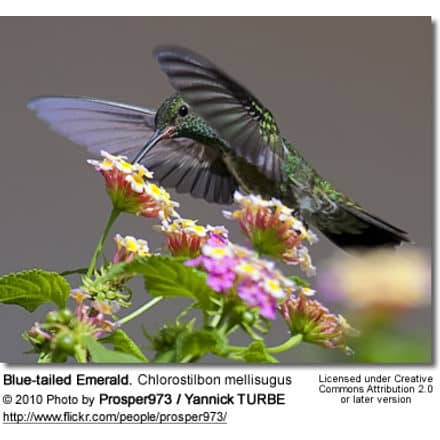
Diet / Feeding
The Blue-tailed Emerald primarily feeds on nectar taken from a variety of brightly colored, scented small flowers of trees, herbs, shrubs, and epiphytes. They favor flowers with the highest sugar content (often red-colored and tubular-shaped) and seek out, and aggressively protect, those areas containing flowers with high-energy nectar. They use their long, extendible, straw-like tongues to retrieve the nectar while hovering with their tails cocked upward as they are licking at the nectar up to 13 times per second. Sometimes they may be seen hanging on the flower while feeding.
Many native and cultivated plants on whose flowers these birds feed heavily rely on them for pollination. The mostly tubular-shaped flowers exclude most bees and butterflies from feeding on them and, subsequently, from pollinating the plants.
They may also visit local hummingbird feeders for some sugar water, or drink out of bird baths or water fountains where they will either hover and sip water as it runs over the edge; or they will perch on the edge and drink – like all the other birds; however, they only remain still for a short moment.
They also take some small spiders and insects – important sources of protein particularly needed during the breeding season to ensure the proper development of their young. Insects are often caught in flight (hawking); snatched off leaves or branches, or taken from spider webs. A nesting female can capture up to 2,000 insects a day.
Males establish feeding territories, where they aggressively chase away other males as well as large insects – such as bumblebees and hawk moths – that want to feed in their territory. They use aerial flights and intimidating displays to defend their territories.
Call / Vocalization
Its call has been described as a pebbly tsip and is song as a pleasant twittering.

